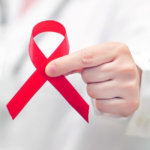Clinical symptomatology, pathogenesis,diagnostics and therapy of lipedema andcellulite were reviewedby Stroessenreuther [1], Rossi andVergnanini [2], Herpertz [3], Bilancini etal. [4,5], Gregl [6], Beninson and Edelglass[7], Singer [8] and others. Both lipedemaand cellulite are characterized by lipidaccumulation in the skin of the thighs. Astherapy variants the CPDT, compressiontherapy, medical exercise, and surgicaltreatment are available. Surgicalinterventions such as lipectomia orliposuction are widely used [1,9,10].Baumeister described tissue damagesincluding damage of lymph vesselsresulting in lymphedema as negativeside effect of liposuction and possibilitiesto prevent those disturbances [11].Additionally, sympathetic nerves areessentially destroyed in liposuction.This regional denervation results finallyin repeating lipid accumulation [12].Therefore, most authors advise againstliposuction to prevent complications andfavour CPDT as therapy of lipedema andcellulite [1,13,14]. CPDT was alsoshown to reduce oxidative stress inlymphedema and lipedema [13,15,16]due to MDA and HNE releasefrom edematous tissue. Nevertheless,this method is time and personalconsuming, and a succesfultherapy needs months or years. Atpresent, it can be safely stated that thereis no topical medication ormanipulative process to which advancedlipedema and cellulite visibly respond ina treatment period of less than 2 months[17]. Shock wave application is a newapproach for the treatment of lipedemaand cellulite. It representsan easy to handle, non-invasive, sideeffect free, local therapy type withshort application periods. The originalidea was to stimulate lipid mobilizationand lipolysis in edematous regionswhich was already demonstrated forultrasound application [18]. In this studythe influence of shockwave applicationsalone and in combination with CPDT onoxidative stress and lipid peroxidationin lipedema and cellulite [13, 15,16] wasinvestigated and related to changes ofbiomechanic skin properties and skinelasticity.Furthermore, influences of SWT on(lymph)angiogenic peptides should beanalyzed.2. Material and methods2.1. Patients and therapy regimenThe study population included 26women suffering from lipedema and/orcellulite who were patientsof the Hufeland Hospital Bad Ems (HeadDr. Dr. R. Brenke) during the period 2004and 2005. Allsubjects gave informedconsent before the investigationwas done. The study was conductedaccording to Good Clinical Practice andto E.U. guidelines for testing medicaldevices. The age of the patients was45.3 ± 11.1 years (all patients together;mean ± S.E.). The age of the groupof patients with lipedema was 45.2± 12.5 years, the age of the groupsof patients with cellulite 45.8 ± 7.9years (mean ± S.E.). The selection ofindividuals excluded supplementationwith antioxidative substances, acuteinfections and chronic diseases. Furtherexclusion criteria were cardiovascular,renal or lung diseases, neoplastic…
Werner Siemsa , Tilman Gruneb, Peter Vossb and Rainer Brenkec a Loges-
School of Physiotherapy, Research Institute of Physiotherapy & Gerontology, Harzburg, Germany b Research Institute of Environmental Medicine at Heinrich-Heine University








